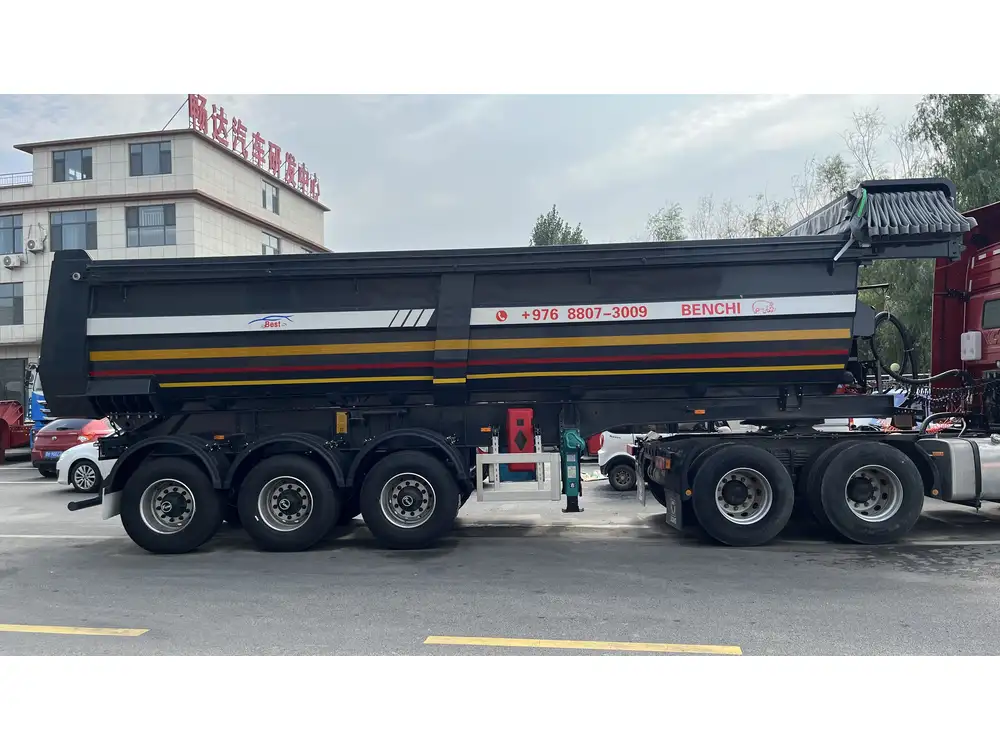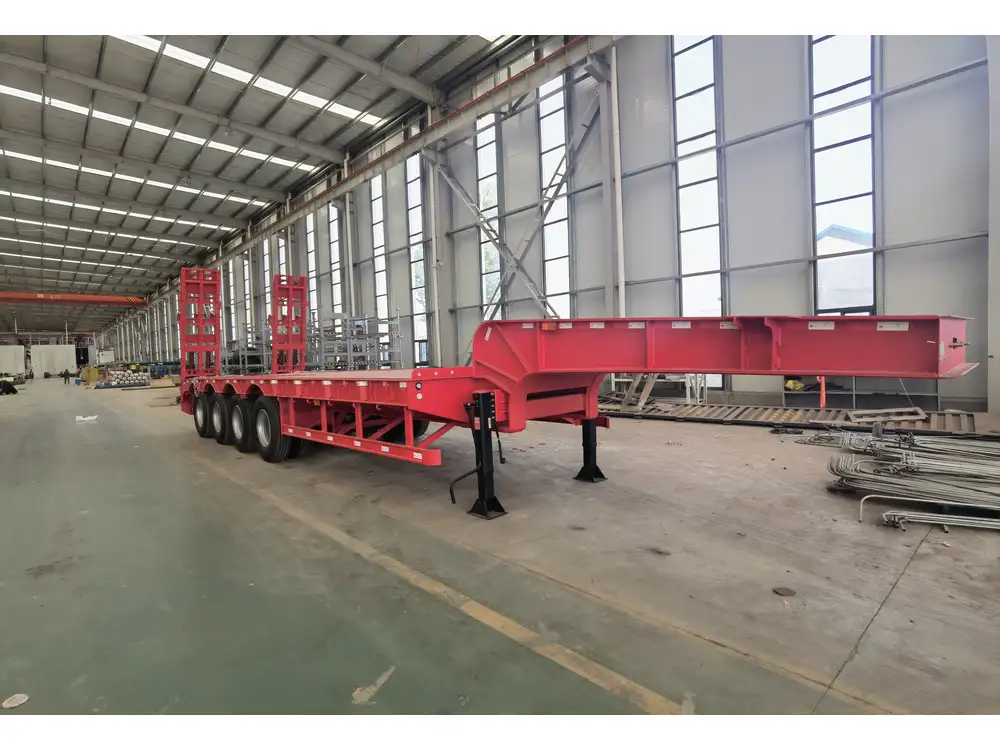When it comes to logistics and freight transport, understanding trailer specifications is crucial for efficiency and compliance. One of the most common trailer types employed in the industry is the 53-foot semi-trailer. This article provides an in-depth exploration of the dimensions, particularly the width of a 53-foot trailer, and its implications for transportation regulations, cargo capacity, and practical applications.
What is a 53-Foot Trailer?
The term “53-foot trailer” typically refers to a specific length of semi-trailer used in the trucking industry for transporting goods. Although the primary measurement to consider is its length, other dimensions such as width and height play critical roles in determining the suitability of a trailer for various types of cargo.
Standard Dimensions
- Length: 53 feet
- Width: Generally, the standard width is 102 inches (8.5 feet)
- Height: Typically between 13.5 to 14.5 feet
Comparison Table of Trailer Dimensions:
| Dimension | Measurement | Typical Use |
|---|---|---|
| Length | 53 feet | Long-haul freight transport |
| Width | 102 inches | Standard for larger cargo |
| Height | 13.5-14.5 feet | Allows clearance on highways and bridges |

Exploring the Width of a 53-Foot Trailer
The width of a trailer is critical for determining what types of cargo can be loaded and how it can be transported. In the United States, the standard width for most semi-trailers, including 53-foot trailers, is 102 inches. This wider width allows for the transport of bulk items and larger equipment.
Impact of Width on Usability and Compliance
The width of a semi-trailer affects various factors, including compliance with state and federal regulations, road safety, and maneuverability.
Regulatory Compliance:
- Most states in the U.S. have established regulations regarding vehicle dimensions. A width of 102 inches aligns with these regulations but may vary in jurisdictions where specific widths are enforced.
Cargo Capacity:
- A wider trailer can accommodate larger shipments, often allowing for more efficient use of space. This is particularly beneficial for transporting dense products.
Road Safety:
- Wider trailers may have a greater potential for swaying during transit, especially in high winds or sharp turns. Safe driving practices become essential in managing the risks associated with wider trailers.
Maneuverability:
- The broader the trailer, the more challenging it may be to maneuver in tight spaces. This factor can influence loading and unloading operations in dock areas.
The Significance of Width in Different Cargo Types

1. General Freight
- Standard dry van trailers often use the full width capability of 102 inches to maximize cargo load, particularly for boxes, bags, and other smaller items.
2. Refrigerated Trailers
- Reefer trailers also utilize the wide specifications to accommodate palleted goods, allowing them to maintain temperature while transporting perishable items.
3. Automotive Transport
- Car haulers may also use 53-foot configurations. The wider specification allows for multiple vehicles to be loaded side by side safely.

4. Specialized Goods
- For oversized loads requiring a 53-foot length, width becomes an essential factor in structuring the logistics around permits and legal restrictions based on specific dimensions.
Comparison Chart of Cargo Types:
| Cargo Type | Maximum Width (inches) | Considerations |
|---|---|---|
| General Freight | 102 | Efficient space utilization |
| Refrigerated Goods | 102 | Requires cooling systems |
| Automotive | 102 | Secured loading methods |
| Oversized Loads | Varies | Requires permits |
Regulations Surrounding Width Limits
Understanding the legal implications surrounding the width of a 53-foot trailer is essential for compliance and minimizing potential liabilities. In the U.S., the maximum width for commercial vehicles is generally 102 inches, though some states permit wider configurations under special conditions with necessary permits.
State-Specific Restrictions
- California: Generally adheres to the 102-inch standard but offers allowances under specific permits.
- Texas: Also mirrors the federal standards but has specific routes for oversized loads.
To ensure compliance, it is essential for operators to research and understand the regulations in states where they will be transporting cargo.

Practical Applications of 53-Foot Trailers
Given the adaptability of a 53-foot trailer, it’s used in various industries and applications. Here are some prominent uses:
1. Freight Shipping
Transportation of goods across long distances using major trucking corridors is one of the most common applications. Businesses in retail and manufacturing rely on these trailers for efficient supply chain logistics.
2. E-commerce Deliveries
With the rapid growth of e-commerce, many logistics firms use a fleet of 53-foot trailers to fulfill massive orders. The wider space allows for optimized loading, which delivers more packages per trip.

3. Construction Materials
The construction industry often utilizes 53-foot trailers to transport scaffolding, building materials, and machinery efficiently.
4. Moving Companies
Many moving companies opt for 53-foot trailers to accommodate household moves, ensuring there’s ample room for large furniture and appliances.
Conclusion: Maximizing Efficiency with Width Measurement
The width of a 53-foot trailer plays a significant role in its functionality across various sectors in the trucking industry. With a standard width of 102 inches, these trailers are designed to optimize loading space while complying with legal regulations. Understanding the specifications, limitations, and applications allows businesses involved in logistics and freight transport to make informed decisions about their transportation methods.

Key Takeaways
- Standard Width: 102 inches is the standard width for 53-foot trailers, allowing for heavy and oversized cargo.
- Regulatory Compliance: Operators should be aware of varied regulations in the states they operate to avoid fines and penalties.
- Diverse Applications: From general freight to automotive transport, the versatility of a 53-foot trailer maximizes utility in various sectors.
- Maneuverability & Safety: Recognize the importance of driving practices tailored to the broader dimensions to ensure safety on the road.
For businesses and operators looking to maximize their freight operations, selecting the correct trailer type and understanding its dimensions can significantly enhance efficiency, reduce costs, and ensure compliance with legal regulations.



